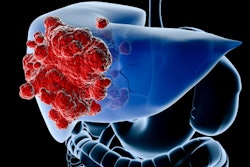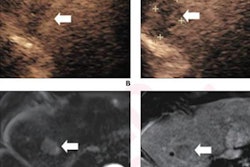Tuesday, November 29 | 1:30 p.m.-2:30 p.m. | T6-SSGI11-1 | S404
In this presentation, researchers will review the effectiveness of contrast-enhanced ultrasound (CEUS) for detecting liver cancer when using different classification systems.A team led by Dr. Ali Bassir from the University of California, Los Angeles compared two criteria: Contrast-Enhanced Ultrasound Liver Imaging Reporting and Data System (CEUS LI-RADS) and the World Federation for Ultrasound in Medicine and Biology-European Federation of Societies for Ultrasound in Medicine and Biology criteria.
For the study, two blinded abdominal radiologists classified each detected lesion per both classification systems. The team analyzed data from 155 lesions with an average size of 28.2 mm in 150 patients with an average age of 71.9 years.
They found that both criteria performed well. For CEUS LR-5, sensitivity was 76.6%, specificity was 94.3%, positive predictive value was 97.9%, and negative predictive value was 54.1%. For the European criteria meanwhile, sensitivity was 86.6%, specificity was 80%, positive predictive value was 93.6%, and negative predictive value was 63.6%.
They also found that the area under the receiver operator curve (AUC) and accuracy of CEUS using CEUS LR-5 criteria was 0.85 and 80.6%, respectively. For the European criteria, AUC and accuracy were 0.83 and 85.2%, respectively.
Find out what else the team found in Bassir's presentation.




















